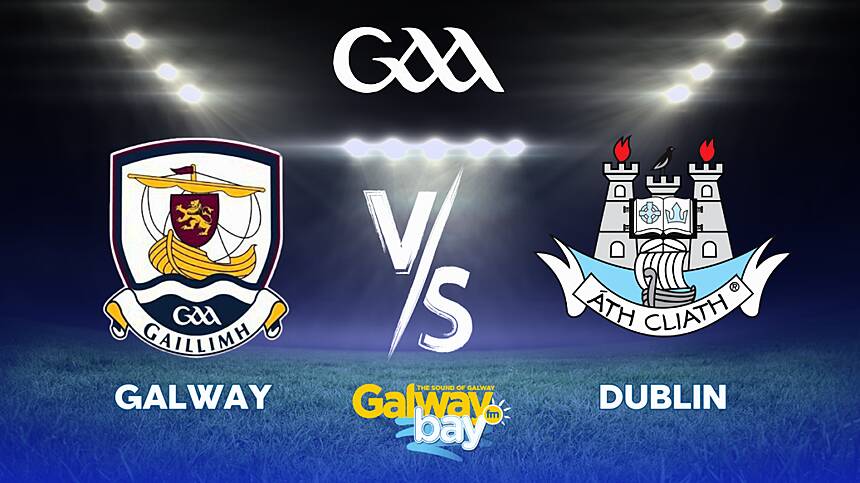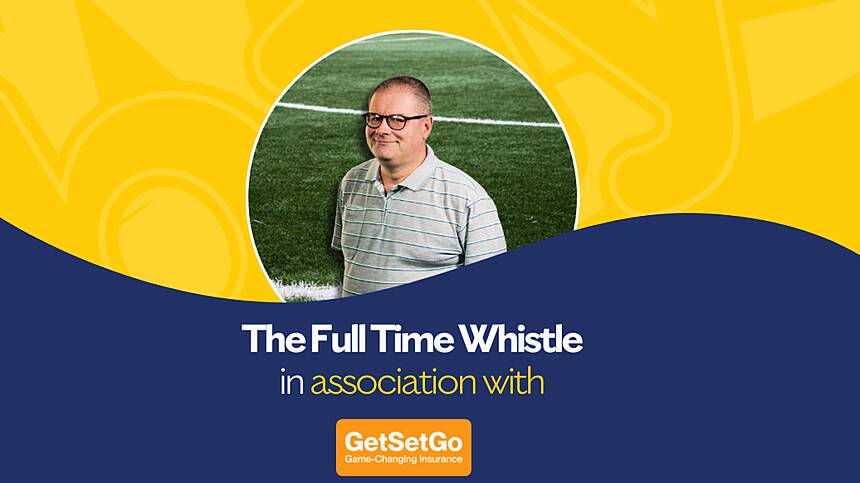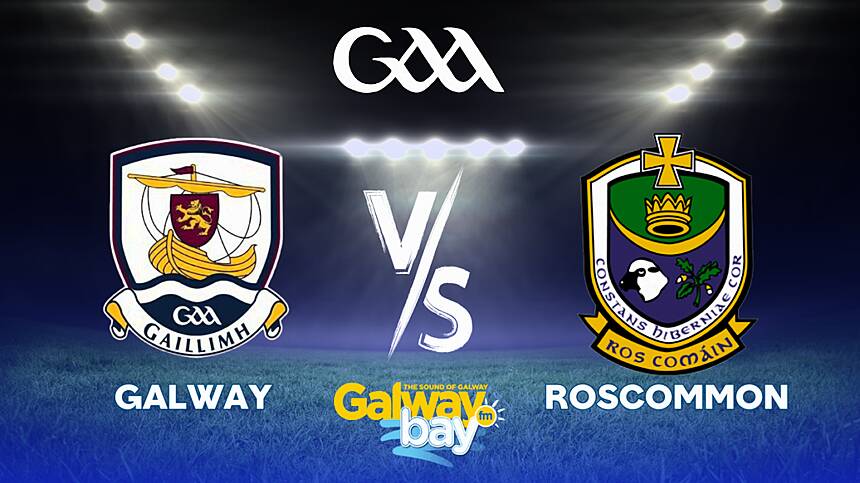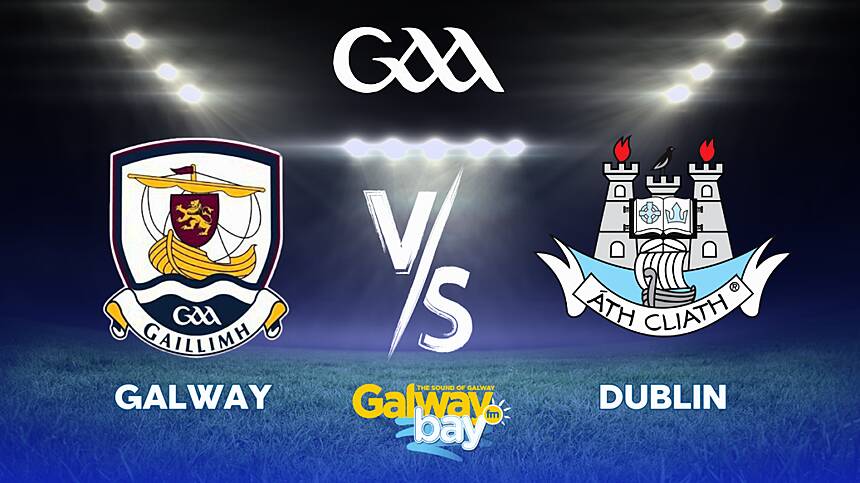Mountainous Stages in the North West Certain to Test the Peloton
The 2017 An Post Rás route was announced this morning at the GPO. Returning to Donegal for the first time in five years, the organisers of An Post Rás have unveiled a challenging route. It features several stages of tough climbing, including two of the most difficult ascents in the country - Mamore Gap and Glengesh Pass.
The 65th edition of the race will travel clockwise around Ireland with stage finishes in Longford, Newport, Bundoran, Buncrana, Dungloe, Donegal town and Ardee before the customary finale in Skerries. Starting in the historic settings of Dublin Castle for the second consecutive year, the race will total just under 1,200 kilometres, and will act as a platform for climbers, sprinters and attacking riders to battle it out for the coveted Rás yellow jersey.
As ever, the race will see Ireland’s finest amateur riders compete against top professional teams and seasoned internationals from around the world, making it a thrilling eight-day spectacle.
Announcing the route for the May 21st to 28th event in Dublin’s GPO, An Post Rás Race Director, Tony Campbell believes that the race will be a test to every style of rider.
“Overall, the race is hillier than it has been in these past couple of years but you can expect that when it is in Donegal. I think that it will be very fast in the first three days and I think the Irish boys will be well prepared for the speed. After that, it is in the lap of the Gods for the climbing.”
While recognising that the uphill climbs will be decisive, Campbell also anticipates that fast, aggressive racing should also play a big part in determining the final winner.
“I always say you can design all the circuits you want but it is up to the riders to race it. They make the race, really, and there are some top quality domestic riders out there. The last time we did the same route for the opening stage in to Longford, it was a very fast stage and an Irishman, Conor Dunne, took the spoils. So while a big chunk in the middle of the race is certainly mountainous, there are roads throughout where speed will play a big part.”
Donegal native and former An Post rider Ronan McLaughlin was on hand to launch this year’s route alongside UCD cyclist and 2016 An Post Rás Stage Winner, Eoin Morton. McLaughlin, who came heartbreakingly close in 2012 to winning a stage following an heroic solo ride in to Bundoran, has his sights set on securing that elusive stage win this time around.
“I’m really looking forward to this year’s An Post Rás with five days being spent in my hometown of Donegal. I went very close in Bundoran in 2012 but it just wasn’t to be so the aim of winning a stage in Donegal is still on my mind. The route is definitely challenging on first glance but it has something to suit every rider so it should be a very exciting from a neutrals point of view. It would be great to see more domestic riders, similar to Eoin in 2016, winning a stage again this year. That’s the challenge for us county riders and that’s also the beauty of the Rás.”
Aileen Mooney, Corporate Communications Manager, An Post, pointed to the long relationship between An Post and Ireland’s only UCI ranked race:
“An Post is the leading supporter of cycling in Ireland. For a decade our trusted and recognisable brand has helped raise the profile and standard of the sport, adding to the fabric of Irish life through events like An Post Rás.”
Details of the international teams set to join this year’s An Post Rás will be released over the coming months. The An Post Chain Reaction Sean Kelly Team has already committed to participating.
An Post Rás 2017 (Total: 1199.8 kilometres):

Stage 1, Sunday May 21: Dublin to Longford (146.1 kilometres)
Stage 2, Monday May 22: Longford to Newport (142.9 kilometres)
Stage 3, Tuesday May 23: Newport to Bundoran (149 kilometres)
Stage 4, Wednesday May 24: Bundoran to Buncrana (151.8 kilometres)
Stage 5, Thursday May 25: Buncrana to Dungloe (181.2 kilometres)
Stage 6, Friday May 26: Dungloe to Donegal (132.1 kilometres)
Stage 7, Saturday May 27: Donegal to Ardee (167.3 kilometres)
Stage 8, Sunday May 28: Ardee to Skerries (129.4 kilometres)
Detailed Route Analysis:
Stage 1, Sunday May 21: Dublin to Longford (146.1 kilometres)

Day one of the An Post Rás rolls out from the same location as twelve months earlier, namely the historic Dublin Castle. This time around the riders will avoid the Phoenix Park, with the 10.2 kilometre neutralised section taking them under the arch at Christ Church Cathedral, past Heuston Station and on to the official drop of the flag outside St Loman’s Hospital, Palmerstown.
The route then winds through Leixlip, Maynooth, Kilcock, Summerhill and Trim prior to the first An Post Hot Spot Sprint in Athboy (km 53.9). Riders then meet the first official climb, the category three Lough Crew (km 73.6) and then into Oldcastle for another An Post Hot Spot Sprint (km. 78.8).
From there the riders head to Ballyjamesduff and into Granard, to take the day’s third and final An Post Hot Spot Sprint (km. 120.2). This is just over 25 kilometres from the end of the stage and the pace will be intense.
In addition to offering more time bonuses, that gallop will signal the sprint to the finish line in Longford, where the race’s first stage winner and initial yellow jersey will be decided.
An Post Rás Race Director Tony Campbell’s assessment:
“On day one we start in Dublin Castle. We did the same last year to commemorate the anniversary of 1916 and there was a good response and teamwork from the event manager in there, Stephen Tobin. He was very pleased with how it went and that made it quite straightforward to start there again.
“There is just one climb at Oldcastle on that first day, as well as three Hot Spot Sprints. They are for time bonuses towards the General Classification, although the stage winner will still be the rider who wears the yellow jersey
“The last time we did this route in 2013, it all stayed together for much of it and then Conor Dunne went clear with another rider. He took the stage and the jersey that day. It could also be similar to the stage to Carlow when things stayed together for about the first three hours and then blew apart. The last part is very undulating and I think there could be something similar again, with a break getting clear.”
Stage 2, Monday May 22: Longford to Newport (142.9 kilometres)

Stage two has a similar look in some ways, given that it also features three intermediate sprints (An Post Primes). The first is after the riders leave Longford and pass through Lanesborough, Ballyleague and Roscommon. It take place in Ballymoe and will play out after 48.7 kilometres of racing. This is followed just 9.1 kilometres later by the second An Post Prime, located in Williamstown (km. 57.8).
From there the peloton will entertain crowds in Cloonfad, Claremorris, Balla, Manulla and Kilnageer before the day’s third and final An Post Prime in Breaghwy (km. 108.5). This is located on the outskirts of Castlebar. Riders will battle through Westport to the finish in Newport.
An Post Rás Race Director Tony Campbell’s assessment:
“The second day is pretty flat, good racing roads. I think there will be a split and there will be a small group coming in together, like the last day we went into Newport. It should be an exciting stage.”
Stage 3, Tuesday May 23: Newport to Bundoran (149 kilometres):

Another mainly flat and fast day begins at the previous day’s finish line prior to heading through Glenhest, Crossmolina and Ballina en route to the sole An Post prime in Inishcrone (km 59.5). From there the route winds through Rathlee, Easkey, Dromore West, Templeboy, Dromard, Ballisadare, Rathcormac, Drumcliff and Ciffoney. The racing finishes in Bundoran with a final gallop to the line.
Donegal rider Ronan McLaughlin put in a massive display five years ago when the race last finished in the town, striking out seventy kilometres from the line in a solo move prior to being passed inside the final 100 metres. The then-An Post rider is now racing as an amateur and may take a slightly more conservative approach this time around, although aiming for the stage win will almost certainly be on his mind.
An Post Rás Race Director Tony Campbell’s assessment:
“The third day brings us up into Donegal. There will be plenty of climbing during the days we are in this area, although this stage is practically flat again. There are good roads for racing on. I think it will most likely be a bunch gallop.”
Stage 4, Wednesday May 24: Bundoran to Buncrana (151.8 kilometres):

Day four of the race is another in Donegal and will hopefully have similarly sunny weather to 2012. The race has has a mainly flat profile up until this point but that will change dramatically en route to Buncrana, with five categorised climbs lurking along the route.
The racing begins in Bundoran and heads through Ballyshannon, Laghey, Donegal town, Ballybofey, Stranorlar and Letterkenny prior to the start of the day’s first climb, the 2.8 kilometre category three Maghera Beg (km. 79.7).
After Burt, Burnfoot and Buncrana the second ascent, the category three Slavery Hill (km. 112.8) is immediately followed by the category two Old Mountain (km. 119.5). Straight away riders then face into the similarly-ranked Pinch Mountain (km. 122.7).
That trio of close peaks will likely break things up. Any regrouping will be jarred by the final climb, the fearsome Mamore Gap (km. 137.4), with the category one slopes likely to cause even more havoc.
From there just 14.4 kilometres remain until the finish, making it likely that the up and down roads will play a major effect on the shape of the race.
An Post Rás Race Director Tony Campbell’s assessment:
“The day to Buncrana should be a great one. Mamore Gap is one of the hardest climbs in the country, but it’s also very hard before you even get there. There is a lot of climbing on the way there, and it is pretty hard to come back from it also. There will be a chase all the way back into the finish.
“This time, we will be doing a loop around Buncrana. It is a different sort of approach than before. They put ramps in the middle of the road on the previous finish, so we are using a new run in. There is a steep hill up to the line in Buncrana and it will make for a fantastic finish.”
Stage 5, Thursday May 25: Buncrana to Dungloe (181.2 kilometres):

The following day is significantly flatter with just two category three ascents lying in wait. However, at 181.2 kilometres this is the longest stage of this year’s An Post Rás and tiring legs may find the distance to be a big consideration.
As was the case on stage four, Burnfoot and Burt feature on the route, after which the peloton will tackle a fast descent at Ramelton, pass through Rathmullen. Then begin the category three climbs of Anny Far and Near/Carnagarrow (km. 69.7).
Just over five kilometres later the peloton will scrap it out to the top of the category three Ballymastocker (km. 75), racing on to the Donegal Gaeltacht locations of An Bhualtaigh, Tulaigh na Dala, Leat Beg and Carraig Airt. From there the race heads to Portnablagh with An Post Primes in Dunfanagy (km. 124) and Falcarragh (km. 136).
Less than 50 kilometres remain on the stage with the route taking the riders through Gweedore, Anagaire and Mullahduff before the finish line in Dungloe.
An Post Rás Race Director Tony Campbell’s assessment:
“The day to Dungloe has just two categorised climbs but it is the longest stage. There are a lot of undulating roads along the way. That up and down terrain plus the distance will make it very hard, but also where it comes in the race.
“The riders will have done three days of good speed to begin with, then that tough climbing stage to Buncrana. I reckon that will be a fantastic stage.”
Stage 6, Friday May 26: Dungloe to Donegal (132.1 kilometres):

After the longest stage is the second-shortest, a 132.1 kilometre race to Donegal town. This is one of the hilliest of this year’s race in featuring six categorised climbs and it will represent a big challenge for the race leader.
The first of those ascents is the category three Loughnambraddan, which comes 17.5 kilometres after the drop of the flag. A lull in climbing follows as the riders race to Glenties, Clooney, Naran and Ardara, after which they will battle up the category one Glengesh Pass (km. 60.5), the category three Altclogh (km. 72.8), Maeenavaghran (category two, km 80.6) and then the category three pairing of Cashling (km. 89.3) and Kilcar (km. 95).
Another lull follows on the flatter roads through Killybegs, Bruckless and Dunkineely (km. 114.2), which is an An Post Prime. Soon afterwards the day’s final climb looms, the category three Drumbeagh (km. 124), with the summit just over eight kilometres from the stage end in Donegal town.
An Post Rás Race Director Tony Campbell’s assessment:
“This is a short stage, but there is a lot of climbing in it. It also includes Glengesh, which, like Mamore Gap two days before, is a very tough climb. The big thing about it is you can see it for so long in front of you and you know that it is coming.
“It is going to really break things up. There will be a lot of chasing after that. Then there is a very, very hard climb coming out of Glencolmcille. I think that there will be a lot of riders not getting back on after Glengesh because of those later climbs. It’s going to be a tough day.”
Stage 7, Saturday May 27: Donegal to Ardee (167.3 kilometres):

The penultimate stage is far flatter, lacking any climbs and also lacking An Post Sprints. It is the fifth stage located in Donegal but heads southeast to Ardee in Louth, covering 167.3 kilometres along the way. After leaving Donegal town the peloton will head through Kesh, Enniskillen, Tamlaght, Clones, Newbliss, Cootehill, Shercock and Carrickmacross before heading into Ardee and a wrangle for the stage finish.
An Post Rás Race Director Tony Campbell’s assessment:
“This is another long stage. There is nothing major on it in terms of climbs, but there will be a lot of very good roads for racing on. They are very twisting and will definitely favour a break.
“It will be another day when there could be big splits. The speed will be the big factor on this stage.”
Stage 8, Sunday May 28: Ardee to Skerries (129.4 kilometres):

The race ends with what is the shortest stage of the event and one which concludes along the same roads as in recent years. The first hour of racing will be flat and fast, heading for Nobber, Navan, Kentstown and Duleek before the first of six climbs. This is the category two Bellewstown (km. 37.9), and is followed by the category three Snowtown Hill/Harbourstown (km. 67.9) and Ringfort View (km. 79.7).
From there the riders will race on to Skerries and the first of four crossings of the finish line. That will begin three 13.8 kilometre laps of the finishing circuit, with the category three climb of Black Hills rearing up at kilometre 92.8, 106.6 and 120.4. They will likely represent the final chances for the race contenders to wrest yellow off the shoulders of the race leader but, if the pattern of recent years continues, that will be far from certain.
An Post Rás Race Director Tony Campbell’s assessment:
“It’s going to be an interesting final stage. We will be coming up the climb into Bellewstown through the racecourse. Then we will cut across towards Stamullen, then turn right for the Naul, and go up another climb there, Snowton Hill.
“After that we will once again do three laps of the finishing circuit. I feel that’s much better than the two laps we had previously done, it works better for the race. Although the Sunday stage hasn't tended to change the GC in previous years, this time around I believe the two climbs before the finishing loop will be decisive. Bringing Bellewstown into it should make the race a lot tighter.”







